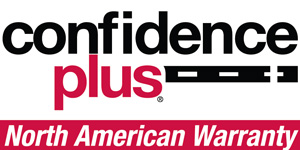Business Hours
- Monday - Friday
- BASHFORD AVE
7:30 AM - 4:30 PM
Phone: (502) 203-0454 - PRESTON HWY
7:00 AM - 4:00 PM
Phone: (502) 230-4279
AMERICAN BRAKE CENTERS INC.
(502) 203-0454 for Bashford Ave or (502) 230-4279 for the Preston Hwy location | 3435 Bashford Ave Ct Louisville, KY 40218
AUTONET TV
Archive for November 2023Them's the Brakes (Brake Rotor Resurfacing)Posted November 26, 2023 8:35 AMYour vehicle's brakes wear out. It's inevitable. You'll notice it when you step on the brake pedal and feel it harder to stop, or there's vibration when you are braking. Most modern vehicles have disc brakes that each use a brake pad that press on a disc (disc brakes!) called a rotor. The friction between them enables you to stop, and each time you do a little bit of the pad and the rotor wears down. The original brakes on vehicles used a rotor that was thick enough to last through at least two replacements of the pads. But vehicle manufacturers who want to save costs and weight now make them thinner, and sometimes the rotors have to be replaced after the first pad replacement. But not always. Vehicle manufacturers specify a minimum thickness to provide safe braking. Sometimes rather than having to have your rotors replaced, they can be put on a lathe and resurfaced. In other words, the surfaces of the disc can be slightly shaved off so the surface is flat and doesn't wobble. Whenever you bring your vehicle in to have the brakes checked, the technician will measure the thickness of the rotors to see if they can be resurfaced without leaving them too thin for safe braking. If they can, with the right tools and skill, the rotors can be resurfaced. If not, the rotors should be replaced. Discuss the options with your service advisor. Our service center can recommend replacements that are designed to help stop your vehicle as well as or better than the vehicle's original rotors. Either way, keep in mind that keeping your brakes in top condition can supply the margin of safety that may one day save your life or the lives of those around you. American Brake Centers Inc. The Last Gas (Fuel Pump Replacement).Posted November 19, 2023 8:32 AMYou're heading down the road and you notice your vehicle is sputtering, like it's running out of gas. But the gauge show's it's still got a quarter of a tank. So what gives? It could be that your fuel pump is failing, meaning your engine is not getting enough gas to run properly. While fuel pumps are built to last a long time, sometimes they fail. Other symptoms you may have a bad fuel pump include your vehicle stalling and then refusing to start again, the engine overheating or a hum or whirr coming from around the gas tank. Or, your Check Engine light may come on. Most fuel pumps are in the gas tank. They have a small electric motor in them. When you bring your vehicle to our service center, a technician will run tests to confirm the fuel pump is getting power to it but has failed. Some vehicles have an access panel so the fuel pump can be removed and replaced. But in some vehicles that don't have that access panel, the technician has to drain the fuel and take the tank out of the vehicle to be able to replace the fuel pump inside. Some parts such as brackets that attach the pump can be reused when the new fuel pump is installed. Most technicians will recommend replacing the fuel filter at the same time the fuel pump is changed out. If the technician has to remove the fuel tank, they'll also check for rust and corrosion and replace any affected parts. Keep one thing in mind - your vehicle's fuel pump is in the fuel tank because it's kept cool and lubricated by the gasoline in the tank. Try not to let your fuel level go below a half or quarter of a tank to maximize the life of your fuel pump. Also, try to use Top Tier gasoline that has higher standards than some other fuels. Your engine—and fuel pump—will thank you. American Brake Centers Inc. Restore Your Get-Up-and-Go (Fuel and Air Induction Cleaning)Posted November 5, 2023 7:00 AMYou may have heard the old saying, "My get-up-and-go got up and went." If your vehicle's engine's fuel economy is noticeably worse, your engine is idling roughly or stalling or your vehicle's acceleration isn't what it used to be, ask your service advisor if you might need your vehicle's fuel and air induction systems cleaned. As the hours pile up on your engine, carbon deposits can build up. It's not unusual for some of the impurities and additives in fuel to leave behind a black residue that eventually will negatively affect your fuel economy and performance. Maybe you're noticing your engine is harder to start, you hear knocking or pinging in your engine and your vehicle just doesn't have the pep it used to. While it's a sophisticated process with a lot of components, a gasoline engine essentially produces power by drawing in air from the outside and mixing it with fuel in the cylinders where this blend of fuel and air is ignited by spark plugs in synchronized explosions. The fuel and air enter your engine through the fuel induction system and air induction system. Because of things like high operating temperatures and impurities, carbon in the fuel can leave behind dark, sooty deposits in the fuel induction system such as the fuel injectors and the throttle body. These and other residue reduce your engine's efficiency and performance. Our service center can use special fuel injector cleaners to remove those deposits from your engine. The technician may manually clean some of the deposits and also put a fuel additive in the fuel tank that will get rid of other deposits that are still in the fuel system Keeping the air induction system clean is also important. A technician can use a liquid cleaner specially designed for the job. Not only can this improve your fuel economy, it may also reduce exhaust emissions and help your engine last longer. Most gasoline now contains detergents that help reduce or prevent these problems, but direct injection is now being used in more vehicles that are more susceptible to clogging. Ask your service advisor if your vehicle could benefit from fuel and air induction cleaning. American Brake Centers Inc. | ||
SearchArchiveJune 2019 (18)July 2019 (4) August 2019 (4) September 2019 (5) October 2019 (4) November 2019 (4) December 2019 (5) January 2020 (5) February 2020 (4) March 2020 (5) April 2020 (4) May 2020 (5) June 2020 (4) July 2020 (4) August 2020 (5) September 2020 (4) October 2020 (4) November 2020 (5) December 2020 (4) January 2021 (6) February 2021 (4) March 2021 (4) April 2021 (4) May 2021 (5) June 2021 (4) July 2021 (4) August 2021 (5) September 2021 (4) October 2021 (5) November 2021 (4) December 2021 (4) January 2022 (6) February 2022 (4) March 2022 (4) April 2022 (4) May 2022 (5) June 2022 (4) July 2022 (5) August 2022 (4) September 2022 (4) October 2022 (5) November 2022 (4) December 2022 (4) January 2023 (5) February 2023 (4) March 2023 (4) April 2023 (5) May 2023 (4) June 2023 (4) July 2023 (5) August 2023 (4) September 2023 (4) October 2023 (5) November 2023 (4) December 2023 (5) January 2024 (5) February 2024 (4) March 2024 (5) April 2024 (4) May 2024 (4) June 2024 (5) July 2024 (4) August 2024 (4) September 2024 (5) October 2024 (4) November 2024 (4) December 2024 (5) January 2025 (4) February 2025 (4) March 2025 (5) | CategoriesWhat Customers Should Know (41)Fuel Economy (6)Tires and Wheels (1)Timing Belt (3)Fluids (3)Maintenance (7)Service Intervals (1)Alignment (4)Check Engine Light (4)Steering (4)Exhaust (5)Shocks & Struts (1)Air Conditioning (4)Brakes (10)Older Vehicles (1)Cooling System (3)Battery (3)Water Pump (1)Oil Change (5)Transmission (2)Tires (2)Customer Detective Work (1)Fuel Saving Tip: Slow Down (1)Fuel System (1)Auto Safety (3)Keys to a long lasting vehicle (2)Windshield Wipers (2)Alternator (2)Automotive News (1)TPMS (1)Headlamps (2)Service Standards (2)Cabin Air Filter (1)Fuel Pump (1)Winter Prep (2)Safety (2)Shocks and Struts (1)Drive Train (2)Inspection (3)Engine Air Filter (1)Dashboard (1)Spark Plugs (1) | |











